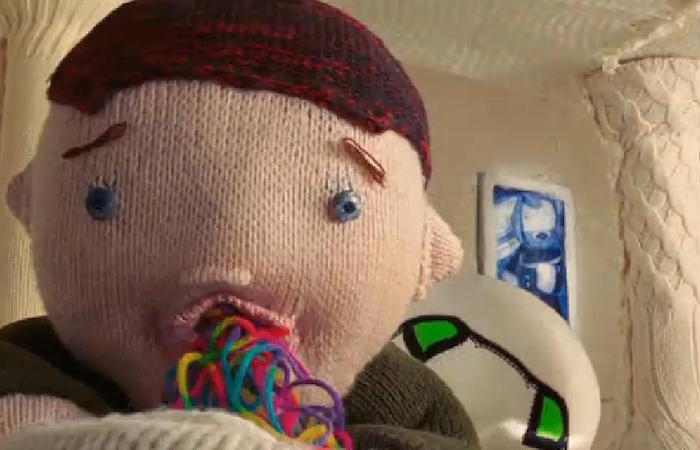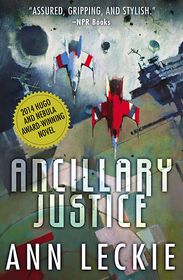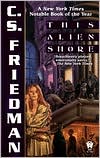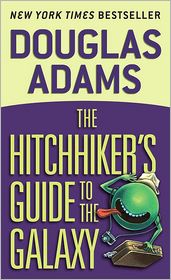4 Books in Which Interstellar Travel Is Insane
 Faster than light travel is a science fiction staple. Like time travel and encounters with alien life, it is one of those big ideas SF was born to explore. When the relativistic speed limit does not meet their narrative needs, many authors are content to let starships flit from here to there in violation of the known laws of physics—just engage the warp drive, jump into hyperspace, or dive down the
Faster than light travel is a science fiction staple. Like time travel and encounters with alien life, it is one of those big ideas SF was born to explore. When the relativistic speed limit does not meet their narrative needs, many authors are content to let starships flit from here to there in violation of the known laws of physics—just engage the warp drive, jump into hyperspace, or dive down the rabbit wormhole, and arrive at your destination unscatched.
Ancillary Justice
Ancillary Justice
By Ann Leckie
In Stock Online
Paperback $17.99
Ann Leckie’s Ancillary Justice is a great novel, worthy of all the awards it won, but her take on long-distance space travel is a bit routine: no roller coaster ride through a psychedelic light shower—her ships slip between the stars in a bubble of normal space. The isolation from the rest of the universe proves to be a great narrative device, but there is no visceral sense of what interstellar travel is like. The crew doesn’t feel anything out of the ordinary.
For other authors, the cost of breaking the laws of science are a bit more, er, visceral. In Isaac Asimov’s I, Robot (if you’ve only seen the Will Smith movie, you’d be surprised to learn there is FTL travel in the book; you would be surprised by 90 percent of the book), one chapter recounts U. S. Robotics’ involvement in building a starship whose FTL travel involves a temporary death for the human crew, since matter and energy cannot exist in the brief instant of the space warp. The positronic brain engineering the interstellar drive was unhinged a bit by FTL travel bending the First Law of robotics. As a result, it developed a sense of humor, and filled the first interstellar flight with practical jokes—a ship with no controls, only beans and milk for food, and during their brief “death” experience, the crew heard hellfire sermons and advertisements for coffins.
Ann Leckie’s Ancillary Justice is a great novel, worthy of all the awards it won, but her take on long-distance space travel is a bit routine: no roller coaster ride through a psychedelic light shower—her ships slip between the stars in a bubble of normal space. The isolation from the rest of the universe proves to be a great narrative device, but there is no visceral sense of what interstellar travel is like. The crew doesn’t feel anything out of the ordinary.
For other authors, the cost of breaking the laws of science are a bit more, er, visceral. In Isaac Asimov’s I, Robot (if you’ve only seen the Will Smith movie, you’d be surprised to learn there is FTL travel in the book; you would be surprised by 90 percent of the book), one chapter recounts U. S. Robotics’ involvement in building a starship whose FTL travel involves a temporary death for the human crew, since matter and energy cannot exist in the brief instant of the space warp. The positronic brain engineering the interstellar drive was unhinged a bit by FTL travel bending the First Law of robotics. As a result, it developed a sense of humor, and filled the first interstellar flight with practical jokes—a ship with no controls, only beans and milk for food, and during their brief “death” experience, the crew heard hellfire sermons and advertisements for coffins.
This Alien Shore
This Alien Shore
Paperback $9.99
In Larry Niven’s Known Space series, travelers through hyperspace see a “mind-wrenching sight of naked space.” Some, like Louis Wu in Ringworld, seem to be able to handle the sight, but others are driven mad by it.
In C. S. Friedman’s This Alien Shore, only the insane can be interstellar pilots: ships travel through the “ainniq,” a hyperspace filled with intelligent predators, alien dragons known as “sana.” The only ones who can see the dragons and navigate the anniq are Gueran outpilots from a star colony where genetic mutation cause humans to exhibit many forms of mental illness. The outpilots suffer the most severe psychic disturbances, but with drugs and biomodifications, they are also the only ones able to transfer ships through hyperspace. Dodging dragons with a psychotic pilot certainly makes for a wild ride.
In Larry Niven’s Known Space series, travelers through hyperspace see a “mind-wrenching sight of naked space.” Some, like Louis Wu in Ringworld, seem to be able to handle the sight, but others are driven mad by it.
In C. S. Friedman’s This Alien Shore, only the insane can be interstellar pilots: ships travel through the “ainniq,” a hyperspace filled with intelligent predators, alien dragons known as “sana.” The only ones who can see the dragons and navigate the anniq are Gueran outpilots from a star colony where genetic mutation cause humans to exhibit many forms of mental illness. The outpilots suffer the most severe psychic disturbances, but with drugs and biomodifications, they are also the only ones able to transfer ships through hyperspace. Dodging dragons with a psychotic pilot certainly makes for a wild ride.
The Hitchhiker's Guide to the Galaxy (Hitchhiker's Guide Series #1)
The Hitchhiker's Guide to the Galaxy (Hitchhiker's Guide Series #1)
In Stock Online
Paperback $8.99
But nobody does crazy like Douglas Adams. In Hitchhiker’s Guide to the Galaxy he gives a fitting description of the experience of interstellar travel via the Infinite Impossibility Drive:
“The real Universe arched sickeningly away beneath them. Various pretend ones flitted silently by, like mountain goats. Primal lights exploded, splattering space-time as with gobbets of Jell-O. Time blossomed, matter shrank away. The highest prime number coalesced quietly in the corner and hid itself away for ever.”
The drive turns Ford Perfect into a penguin and Arthur Dent loses limbs (and in the film adaptation’s most memorable scene, they and the rest of the crew are transformed into yarn people). Meanwhile, they encounter a man with five heads, are drenched by a million-gallon vat of custard, and observe great ugly bulges in the fabric of space-time before being accosted by an infinite number of monkeys wanting to talk about a script for Hamlet. Now that is the way to see the galaxy. Especially when there is a good restaurant waiting at the end of the universe.
(Note: No probabilistic primate labor was used in writing this post.)
But nobody does crazy like Douglas Adams. In Hitchhiker’s Guide to the Galaxy he gives a fitting description of the experience of interstellar travel via the Infinite Impossibility Drive:
“The real Universe arched sickeningly away beneath them. Various pretend ones flitted silently by, like mountain goats. Primal lights exploded, splattering space-time as with gobbets of Jell-O. Time blossomed, matter shrank away. The highest prime number coalesced quietly in the corner and hid itself away for ever.”
The drive turns Ford Perfect into a penguin and Arthur Dent loses limbs (and in the film adaptation’s most memorable scene, they and the rest of the crew are transformed into yarn people). Meanwhile, they encounter a man with five heads, are drenched by a million-gallon vat of custard, and observe great ugly bulges in the fabric of space-time before being accosted by an infinite number of monkeys wanting to talk about a script for Hamlet. Now that is the way to see the galaxy. Especially when there is a good restaurant waiting at the end of the universe.
(Note: No probabilistic primate labor was used in writing this post.)


